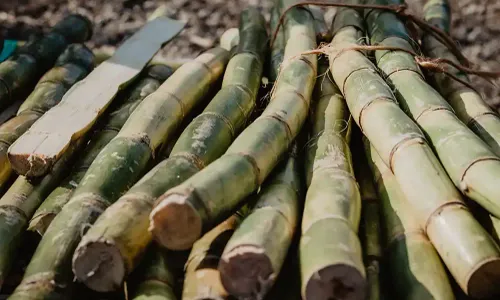What technologies are shaping the future of Sugar beet vs sugar cane production?
Comprehending Sugar Beet Vs Sugar Cane: a Deep Study Their Handling and Applications
The contrast between sugar beet and sugar cane reveals essential differences in their handling and use. Each plant has distinct farming approaches that affect its geographic distribution. Sugar beets are mainly processed into granulated sugar for numerous food, while sugar cane is often used in beverages. Comprehending these differences drops light on their functions in the food industry and their economic relevance. Yet, the more comprehensive effects of their farming and handling necessitate more expedition.
Introduction of Sugar Beet and Sugar Cane
Sugar beet and sugar cane are 2 main sources of sucrose, each contributing considerably to the global sugar supply. Sugar beet is an origin vegetable, typically harvested in cooler climates, while sugar cane is a high yard that prospers in warmer tropical and subtropical regions. The handling of sugar beet includes washing, slicing, and drawing out juice, complied with by purification and crystallization. On the other hand, sugar cane handling consists of crushing the stalks to remove juice, which is after that cleared up and concentrated right into sugar crystals.
Both crops are abundant in sucrose, however their structure differs a little, with sugar cane usually having a higher sugar content. Each resource also contributes in biofuel manufacturing, with sugar beet commonly used for ethanol. While both are crucial for various applications, their distinctive growth requirements and handling techniques affect their particular contributions to the sugar market.
Geographic Circulation and Cultivation Problems
Sugar beet and sugar cane are cultivated in distinct geographical regions, influenced by their particular environment and soil demands. Sugar cane flourishes in exotic climates, while sugar beet is much better suited for pleasant zones with cooler temperature levels. Comprehending these farming problems is necessary for maximizing production and ensuring high quality in both plants.
Worldwide Expanding Regions
While both sugar beet and sugar cane are essential resources of sugar, their global expanding areas vary substantially due to environment and dirt requirements. Sugar beet prospers mostly in warm regions, with substantial production concentrated in Europe, The United States And Canada, and parts of Asia. These areas commonly include well-drained, fertile soils that support the plant's development cycle. In contrast, sugar cane is mainly grown in tropical and subtropical areas, with major production centers located in Brazil, India, China, and Thailand. This plant embellishments in warm, moist environments that facilitate its growth. The geographical circulation of these 2 plants highlights the flexibility of sugar cane to warmer environments, while sugar beet remains reliant on cooler, temperate conditions for peak growth.
Environment Needs
The environment needs for sugar beet and sugar cane vary noticeably, mirroring their adaptation to distinct environmental problems. Sugar beet thrives in pleasant environments, calling for amazing to moderate temperature levels, preferably ranging from 15 ° C to 20 ° C. It is sensitive to frost and gain from well-distributed rainfall during its growing season. This crop is generally cultivated in regions such as Europe and North America.
Conversely, sugar cane flourishes in tropical and subtropical environments, favoring warmer temperature levels between 20 ° C and 30 ° C - Sugar beet vs sugar cane. It requires abundant sunshine and consistent rains, making it fit to locations like Brazil, India, and Southeast Asia. The contrasting climate preferences of these plants significantly affect their geographical circulation and agricultural practices
Dirt Preferences
Both sugar beet and sugar cane require specific dirt conditions to thrive, their preferences differ significantly. Sugar beets prosper in well-drained, fertile dirts abundant in organic issue, with a pH ranging from 6.0 to 7.5. These problems are usually found in pleasant areas, especially in Europe and North America. In comparison, sugar cane favors deep, abundant soils with outstanding drainage and a somewhat acidic to neutral pH (6.0 to 7.0) This plant is mainly grown in tropical and subtropical environments, such as Brazil, India, and Australia. The geographical distribution of these crops shows their dirt preferences, as sugar beets are matched for cooler climates, while sugar cane grows in warmer, a lot more moist atmospheres.
Harvesting and Processing Techniques
In analyzing the harvesting and handling methods for sugar beet and sugar cane, distinctive methods arise for every plant. The contrast of harvesting techniques discloses variations in effectiveness and labor needs, while extraction methods highlight differences in the preliminary processing phases. Additionally, recognizing the refining processes is important for reviewing the top quality and return of sugar produced from these 2 resources.
Harvesting Techniques Comparison
When considering the gathering approaches for sugar beet and sugar cane, distinctive techniques arise that mirror the distinct features of each crop. Sugar beet gathering usually involves mechanical techniques, making use of specialized farmers that uproot the beets from the ground, eliminating tops and dirt while doing so. This strategy allows for effective collection and lessens plant damages. In contrast, sugar cane harvesting can be either manual or mechanical. Manual harvesting involves workers cutting the stalks short, while mechanical harvesting utilizes large machines that cut, chop, and collect the cane in one procedure. These differences in collecting methods highlight the adaptability of each crop to its expanding setting and the agricultural methods prevalent in their respective regions.
Extraction Strategies Review
Removal strategies for sugar manufacturing vary substantially in between sugar beet and sugar cane, mirroring their special attributes and processing requirements. Sugar beetroots are typically collected making use of mechanical harvesters that cut the roots from the ground, followed by cleaning to eliminate soil. The beetroots are after that cut into thin items, recognized as cossettes, to promote the removal of sugar via diffusion or warm water extraction. In comparison, sugar cane is generally gathered by hand or device, with the stalks reduced close to the ground. After collecting, sugar cane goes through squashing to draw out juice, which is then made clear and focused. These extraction methods highlight the distinctive techniques utilized based upon the source plant's physical attributes and the wanted effectiveness of sugar removal.
Refining Processes Discussed
Refining procedures for sugar from both sugar beet and sugar cane include numerous necessary steps that assure the end product is pure and suitable for consumption. Initially, the raw juice extracted from either source goes through information, where pollutants are gotten rid of using lime and warmth. Following this, the juice is vaporized to concentrate the sugars. For sugar beetroots, the procedure typically consists of carbonatation, while sugar cane may go through an extra simple formation method. When focused, the syrup is subjected to crystallization, generating raw sugar. The raw sugar is detoxified via centrifugation and more refining, resulting in the white granulated sugar commonly located on shop racks. Each action is vital in guaranteeing product top quality and safety for consumers.
Nutritional Profiles and Health And Wellness Impacts

Wellness effects connected with both sources mostly stem from their high sugar content. Too much intake of sucrose from either resource can result in webpage weight gain, dental issues, and enhanced risk of chronic diseases such as diabetes and cardiovascular disease. Sugar cane juice, frequently consumed in its natural kind, may give added antioxidants and phytonutrients contrasted to refined sugar beet products. Inevitably, small amounts is type in utilizing both sugar beet and sugar cane in diet plans to alleviate potential wellness risks.
Economic Significance and Worldwide Manufacturing
The economic relevance of sugar beet and sugar cane is considerable, considering that both crops play vital roles in the worldwide farming landscape. Sugar cane, generally cultivated in tropical and subtropical areas, represent about 75% of the world's sugar production. Countries like Brazil and India are leading manufacturers, contributing substantially to their nationwide economic climates via exports and regional intake.

The international sugar market is valued at billions of dollars, influenced by numerous factors including environment, profession policies, and consumer need. Accordingly, both sugar beet and sugar cane are crucial for financial security and development within the agricultural field worldwide.
Applications in the Food Market
In the food sector, sugar beet and sugar cane serve essential functions, providing sugar that are integral to a broad variety of items. Both resources generate granulated sugar, which is a key active ingredient in baked goods, beverages, and confections. Sugar beet, commonly favored in areas with colder climates, is generally found in processed foods such as jams, jellies, and dairy products. On the other hand, sugar cane is preferred in tropical areas and is regularly used in beverages like rum and sodas.
Beyond granulated sugar, both resources are additionally refined right into molasses, syrups, and various other sugar, boosting flavor profiles and improving texture in various applications. Additionally, the spin-offs of sugar manufacturing, such as pulp and bagasse, are used in producing animal feed and biofuels, additionally demonstrating their flexibility. On the whole, sugar beet and sugar cane are crucial components of the food sector, affecting preference, structure, and general product top quality.
Ecological Factors To Consider and Sustainability
As concerns about environment change and resource depletion expand, the ecological impact of sugar beet and sugar cane farming has actually come under analysis. Sugar cane, commonly expanded in exotic regions, can result in logging and environment loss, worsening biodiversity decline. Furthermore, its farming regularly depends on extensive water usage and chemical fertilizers, which can pollute neighborhood waterways.
On the other hand, sugar beet is normally expanded in warm climates and might advertise soil wellness through crop rotation. However, it additionally faces obstacles such as high water intake and reliance on chemicals.
Both crops add to greenhouse gas discharges during handling, but sustainable farming techniques are arising in both fields. These consist of accuracy farming, chemical-free farming, and integrated parasite administration. On the whole, the environmental sustainability of sugar production stays a pushing concern, demanding continuous examination and fostering of environmentally friendly methods to alleviate damaging effects on communities and neighborhoods.

Often Asked Inquiries
What Are the Distinctions in Preference In Between Sugar Beet and Sugar Cane?
The taste distinctions in between sugar beet and sugar cane are check over here subtle yet distinctive. Sugar beet tends to have a slightly earthier taste, while sugar cane offers a sweeter, a lot more fragrant profile, interesting numerous cooking choices.
Can Sugar Beet and Sugar Cane Be Made Use Of Mutually in Recipes?
Sugar beet and sugar cane can frequently be utilized reciprocally in recipes, though subtle differences in flavor and structure might occur. Substituting one for the other normally preserves the designated sweetness in culinary applications.

What By-Products Are Produced From Sugar Beet and Sugar Cane Processing?
The handling of sugar beets and sugar cane yields numerous byproducts. These consist of molasses, animal feed, and biofuels. Each by-product offers unique objectives, adding to farming and commercial applications past the primary sugar extraction.
How Do Sugar Beet and Sugar Cane Affect Soil Health And Wellness?
The effect of sugar beet and sugar cane on soil health and wellness varies; sugar beets can improve organic matter, while sugar cane may result in soil degradation if not handled correctly, impacting nutrient levels and soil structure.
Exist Particular Selections of Sugar Beet and Sugar Cane?
Different specific ranges of sugar beet and sugar cane exist, each adapted to various environments and dirt kinds. These ranges are grown for qualities such as return, illness resistance, and sugar web content, enhancing agricultural efficiency.